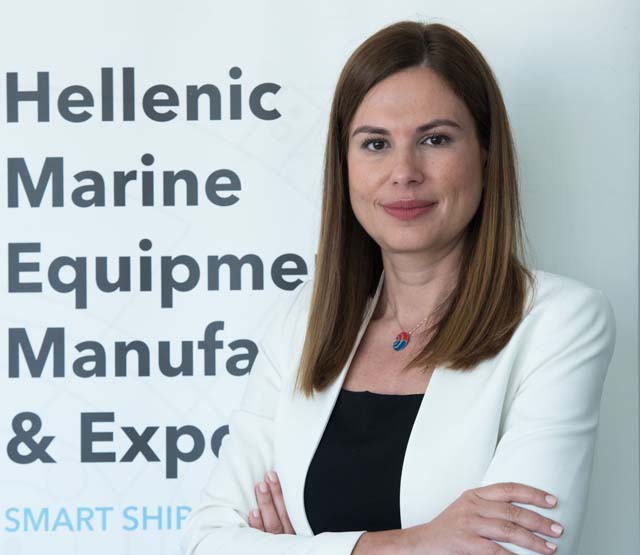With sustainability now a key priority for marine equipment manufacturers, HEMEXPO President, Eleni Polychronopoulou, discusses new technology development and its impact on the maritime industry.
Recent decades have seen a dramatic acceleration in the development and adoption of new technologies. This has affected the way in which we think, both in a personal and professional capacity, and can be seen in almost every area of our lives both on land and at sea. There is no doubt that the years ahead will be a period of tremendous challenges, as technology moves faster than our imaginations can comprehend. However, at the same time we must develop and inspire the next generation to inherit a holistic approach to environmental and sustainability issues, as these will be key considerations in determining how useful new technologies really are.
Of course, recent developments in technology have proved highly significant for the shipping industry. A range of technologies are used throughout a ship’s life – from its “birth” at the shipyard, through its daily life at sea and in ports, until the end of life when it is recycled.
Concrete examples of how technology drives change in the industry and will continue to do so in the future, can be seen by a brief review of regulatory changes at IMO. From the beginning of the 2000s onwards, intersections between new technologies and new regulations have become ever more frequent: in addition to demanding better technologies for coatings, ballast water management and emissions, regulators have felt compelled to develop new rules for electronic charting, cyber security, digital safety messaging and autonomous ship technology – to name but a few.
No slowdown is expected in the coming years. Ιn this context, the entire maritime industry is changing. Green initiatives, monitoring technologies that cut fuel consumption and/or protect marine ecosystems, and environmentally friendly engines running on LNG or other alternatives such as methanol, ammonia or biofuels – all of these are maritime realities. Even zero emission battery and fuel cell technologies are moving beyond testing and into the operational phase.
Meanwhile, digitalisation and artificial intelligence are affecting the shipping industry in profound ways which will change the way the entire industry operates. For example, autonomous ship technologies are now being developed which can support safer operations by existing crews, or support remote control of some functions from ashore. Some vessels are even being tested which provide unmanned solutions to challenges posed by environmental management, marine inspection and surveying the ocean floors.
The role of onshore personnel in ship operations has also changed. Today, onshore staff can not only monitor the weather thousands of miles away, but respond to issues with a vessel in real time. The rise of augmented reality suggests that we are only now beginning to understand the potential, for owners, class societies and crews. The development of digital twins for ships looks set to take the possibilities to another level.
We can also learn a lot from other sectors: there are a number of major projects in progress which aim to share the technological achievements of humanity in space.
The adoption of new sustainable technologies is also becoming increasingly important for investment. Companies are now rated based on environment, social and governance (ESG) criteria, and while there remains much to do to establish robust standards, I believe that a company’s ability to operate, raise capital and develop will shortly be directly intertwined with its ESG rating report.
The challenges are huge and those who talk about radical changes are not wrong. The greater the challenges are, the greater the risk. Certainly, we are in a transitional phase; there are no integrated or specific technologies that can provide solutions to all of the problems we face, while there will not be a ‘one size fits all’ solution.
However, when the stakes are very high, the chances of failing also increase. Just as owners may sometimes see associated costs as “too high”, so many marine equipment manufacturers may hesitate over “which ship to choose?”, or “which technology to develop?”
Large corporations can sometimes absorb or offset the risks, but for the majority of companies this is not possible. Therefore the only way forward is through collaboration, and for us all to work as a team and contribute to the common goal. After all, for the first time in history, the advances made by technology have in some senses brought the land and the sea together.



